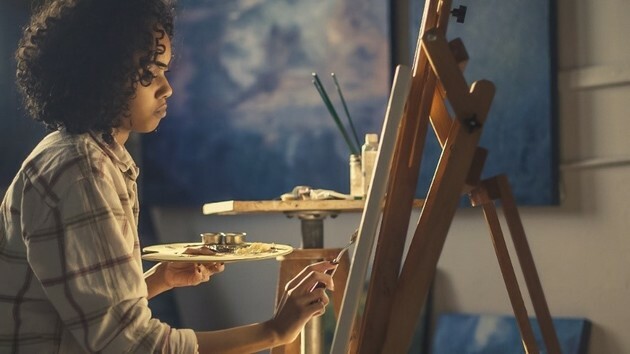Art is a type of communication that has accompanied humanity since the beginning. Already in the time of caves, human beings communicated through it, the so-called rock art.
Currently, there are 11 types of art: music, dance, painting, sculpture, theater, literature, cinema, photography, comic books (comic book), electronic games and digital art.
So let's see all of them and how they present themselves.
1st art - Music

This type of art has the power to awaken different feelings, favoring mental balance and well-being.
Music is present in our daily lives from the moment we are born. From the lullabies they hummed to us, to the dancing rhythms we heard at a party, for example.
It can be said that the musical language is formed by several sounds that are presented in predetermined periods of time, thus forming - rhythm, harmony and melody.
Rhythm is given by the timing between one sound and another. Harmony is the combination of simultaneous musical elements.
Melody, on the other hand, refers to the sequence of sounds that are presented in music, being perceived in our minds as a unit. That's why we can whistle a song, for example, even if we don't know how to play an instrument.
In Brazil, we have as examples of great names in music the artists Caetano Veloso, Gilberto Gil, Elis Regina, Tom Jobim, among others.
Learn more about the topic:
- MPB
- Music history
- Musical notes
- folk songs
- Songs from the Military Dictatorship
2nd art – Dance
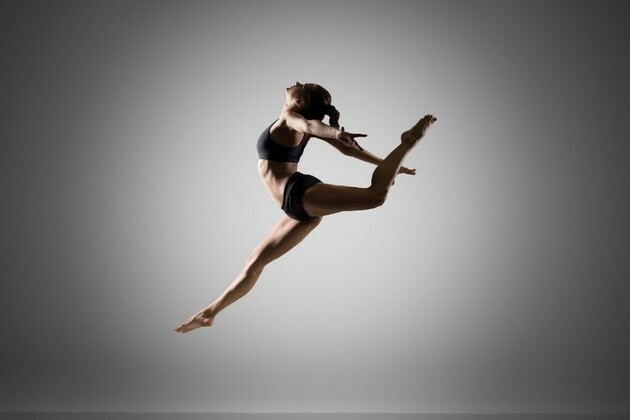
Dance is the art of bodily movement. Using the body as an instrument, people can express their feelings through rhythmic gestures.
It is one of the oldest forms of artistic expression, having its origins in prehistory. People danced in rituals of celebration, thanksgiving, funeral ceremonies and to ask for protection. In other words, the dance had a sacred character.
Usually this type of art is accompanied by music, being almost always inseparable, however it is also possible to express yourself in this language without there being sound.
It is a very healthy way of expression, as in addition to favoring creativity, it also helps in body and psychological vitality, bringing countless benefits.
As examples of great Brazilian dancers, we have: Ana Botafogo, Carlinhos de Jesus and Ivaldo Bertazo.
According to Isadora Duncan, an important North American choreographer and dancer:
"Dancing is feeling, feeling is suffering, suffering is loving... You love, suffer and feel. Dance!"
To learn more about the subject:
- History of Dance in Brazil
- African Dances
- folk dances
3rd art - Painting
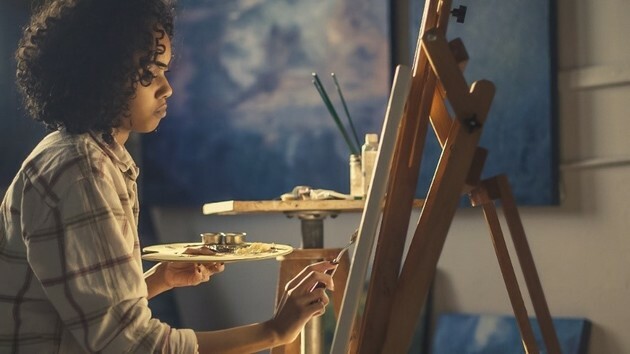
We can define painting as the technique of depositing colored pigments - which can be paste, liquid or powder - on a surface, generating figurative or abstract images.
This is an activity that allows people to communicate and show feelings through shapes, colors and textures.
The history of painting dates back to the prehistoric period, when humans used caves as a support for their drawings. This type of art was made with pigments extracted from mineral oxides, charred bones, vegetables, charcoal, blood and animal fats.
It is an artistic expression that allows men to better understand their past, customs and beliefs, as it can reveal a lot about the culture of a particular time and place.
In addition, it is considered one of the most traditional forms of art and most of the great works of humanity are paintings with oil paint.
Here in Brazil, painting for a long time followed European trends and some painters responsible for a greater appreciation of genuinely Brazilian themes are: Tarsila do Amaral, Portinari, Di Cavalcanti, Caribé, among others.
Learn more about the subject by reading the texts:
- What is Painting?
- modern painting
- Contemporary Painting
4th art - Sculpture
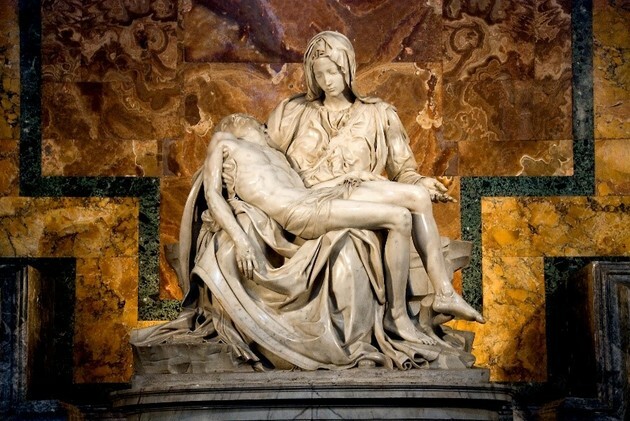
Sculpture is understood as the art of modeling or eroding raw materials (such as clay, marble, wood and stone) and converting them into objects with meaning, expressing ideas and feelings.
Using shapes, spaces and volumes, the artist creates three-dimensional works, that is, ones that have height, width and depth.
Like the other art forms we have seen so far, sculpture is also very old and began to be done in primitive societies.
It is curious that in these early works in sculpture, there were no representations of male figures. Female forms with voluminous bellies and breasts prevailed. An example is the statuette of Venus of Willendorf, found in Austria and carved over 25,000 years ago.
Some important Brazilian sculptors, without a doubt, are: Aleijadinho (1730-1814) and Victor Brecheret (1894-1955).
See too:
- History of Sculpture
- Evolution of Greek Sculpture
- greek sculpture
- Roman Sculpture
- Baroque Sculpture
- Michelangelo's Pietà
- Origami: definition, origin and meanings
5th art – Theater

Theater is the artistic language in which people, in this case actors and actresses, represent a story to an audience.
The most similar theatrical manifestation to the one we know today in the West appeared in Ancient Greece, in the VI century BC. Ç.
At that time, the theater mixed sacred and profane themes and was made in honor of the god Dionysus, considered the god of wine, festivals and fertility. In these performances, the participation of women was not allowed, with only men playing the roles.
The theatrical genres that existed in Ancient Greece were only comedy and tragedy. Over time, the theater was transformed and also advanced into other territories.
Today there are many ways and styles of performing theatre, including: musical, opera, puppetry, shadow theater, drama, comedy, street theater, stage theater, among others.
In Brazil, we can mention Fernanda Montenegro, Paulo Autran, Bibi Ferreira and Raul Cortez as some outstanding names in this art.
Learn more about the subject:
- Greek Theater
- Medieval Theater
- Realistic Theater
- Vincentian Theater
- Renaissance Theater
- History of Theater in Brazil
- Performance in Art
6th art - Literature

In literature, writing is the tool used to express yourself.
The invention of writing was one of the most important events for mankind. It figured a milestone and delimits the end of the so-called “pre-history” and the beginning of “history”.
Over time and its evolution, it became not only a simple and direct means of communication, but also a tool for transmitting ideas, feelings, reflections, thoughts and for narrating stories.
The development of literature happened gradually and each time and place has distinct literary characteristics. However, we can say that literature has always represented an important source of historical knowledge about societies.
There are many ways to write and types of literary texts, for example: prose, fiction, romance, poetry and string.
Some important names in the national literary scene are: Carlos Drummond de Andrade, Cecília Meireles, João Cabral de Melo Neto and Clarice Lispector.
See too:
- What is Literature?
- Brazilian literature
- Contemporary Brazilian Literature
- Literature of twine
- Medieval Literature
- History of Writing
7th art - Cinema

Cinema is a type of art that emerged after the invention of photography, as an offshoot of it. Using several images - photographs - which are projected very quickly on a screen, the human eye sees this sequence of photos as a film, that is, with movement.
In this way it is possible to tell stories, thus transmitting sensations and sharpening feelings such as joy, fear, sadness and love.
The origin of this artistic language took place in the late nineteenth century. At the time, many people were looking for ways to create something similar to cinema.
But it was the brothers Auguste and Louis Lumière who made the first cinematographic projection to the public, in 1895, in France.
The film shown was 40 seconds long and was entitled "The arrival of the train at La Ciotat station" or "The workers leaving the factory". The audience was quite surprised and intrigued. It is said that some people even ran to the back of the projection room, afraid of the train's movement.
Since then, this technique has been greatly improved and today we can enjoy and have fun with 3D movies, which give the illusion of actually being inside the story told.
We can cite as notable directors of Brazilian cinema the names: Walter Salles, Fernando Meirelles, Hector Babenco, and others.
To read more about the origin of cinema:
- Cinema's history
- History of Brazilian Cinema
8th art – Photography

The word photography has a Greek origin and means to write with light, with photo meaning light and writing expresses the notion of writing. It is an art that uses machines to capture images through reactions obtained through lighting.
The year 1826 is considered a milestone in the history of photography, when Frenchman Joseph Niépce managed to fix the first photographic representation on a tin plate. Niépce positioned his invention – a camera obscura – in front of a window and let sunlight into the interior of the machine for 8 hours. The result was a somewhat blurry image of the roof of the house next door.
Since then, photography has undergone many advances. Currently, with technological progress and social networks, this language is gaining more and more space in our lives and arousing people's interest.
At the beginning of its invention, photography was not considered art properly. However, over time it was possible to understand that this language also has creative characteristics and potential.
Photographing is like making a “cutout” of the world, choosing to show a point of view, a certain look. However, it also enables the creation of “new realities”, making use of scenarios, costumes and poses, fully exploiting all the imaginative capacity of human beings.
One of the most important and world-renowned Brazilian photographers is Sebastião Salgado. Other important names on the national scene are: German Lorca, Claudia Andujar and Maureen Bissiliat.
9th art – Comics
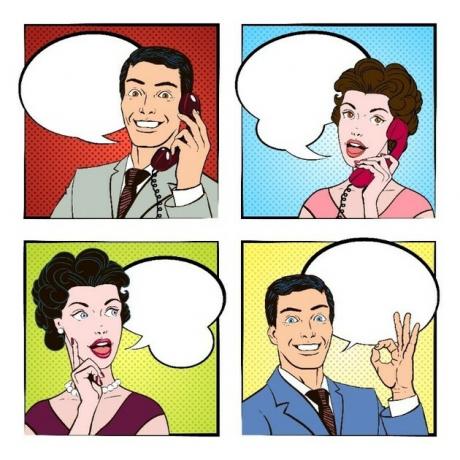
THE comic, or HQ, is defined by a sequence of drawings made on boards that together tell a story. It usually uses balloons and text written inside them in order to tell what the characters are talking or thinking.
This way of telling stories appeared between 1894 and 1895. Its inventor was the American Richard Outcault, who published in newspapers what was considered the first comic book.
yellow kid (Yellow Boy), was a cartoon whose character was a child of humble origins, who lived in American ghettos, spoke slang and wore a yellow sweater. This comic was intended to criticize the consumer society and bring up issues such as the racial issue.
Currently, comics are present all over the world and represent an important means of mass communication.
The supports chosen by most comic book designers - also called cartoonists - are books, comic books or strips published in newspapers and magazines.
In Brazil, the comic that stands out the most is Monica's Gang, created by Mauritius de Souza, in 1959.
Read more about the subject in the texts:
- Textual Genre Cartoon
- Textual Genre Charge
- Verbal and Non-verbal Language
- What are Visual Arts?
- pop art
10th art - Electronic games (games)

Electronic games - or games - are programs in which people interact with objects virtually, having to overcome challenges, fulfilling goals and having fun.
They were presented to the public in the 1970s, as a result of experimentation by academics on research in the field of computer science.
From the launch of the atari, in 1977 in the USA, the universe of games gained momentum. Like atari, it was possible to be entertained with different games using the same console, that is, the same machine – or video game.
Due to technological evolution, this type of art is constantly being improved, being one of the most popular forms of fun and entertainment in the world.
Some Brazilian games that have been successful are Celeste, Horizon Chase and Until Dead.
11th art – digital art

Every form made by means of computers can be called digital art.
It is a type of art that has evolved concurrently with technological development. It grew in the 1980s and was driven by the music of Frenchman Pierre Henry, considered the forerunner of electronic music.
Nowadays, this form of expression - also called cyber art - encompasses many languages besides music, such as video, photography, drawing, cinema and even literature.
It's a relatively new art that is expanding a lot. The supports usually chosen are computer screens, smartphones, tablets, televisions, projections and graphic prints.
As an example, we have digital illustrations, video mappings, gifs and animations.
Some Brazilian artists who use this language are Guto Lacaz and Eduardo Kak.
What is art?

Art has the power to sharpen our sensitivity, bringing to light different feelings and emotions, and some even conflicting.
Word that originates in Latin (ars), art means abiliity and can be understood as the human capacity for cultural manifestation.
As we could see, there are several ways that people have found to express themselves artistically, each with its particularities and languages.
And the 7 types of art?
In 1911, film critic Ricciotto Canudo created what he called the Manifesto of the Seven Arts and Aesthetics of the Seventh Art, which was published in 1923. In this manifesto, he classified art into seven types.
- song
- dance
- painting
- sculpture
- theater
- literature
- movie theater
Over time and technological and social changes, other artistic manifestations were included in this classification.
- photography
- comic book (comic)
- electronic games (games)
- digital art
If you are thinking of pursuing a career in any arts field, read Courses for art lovers.


